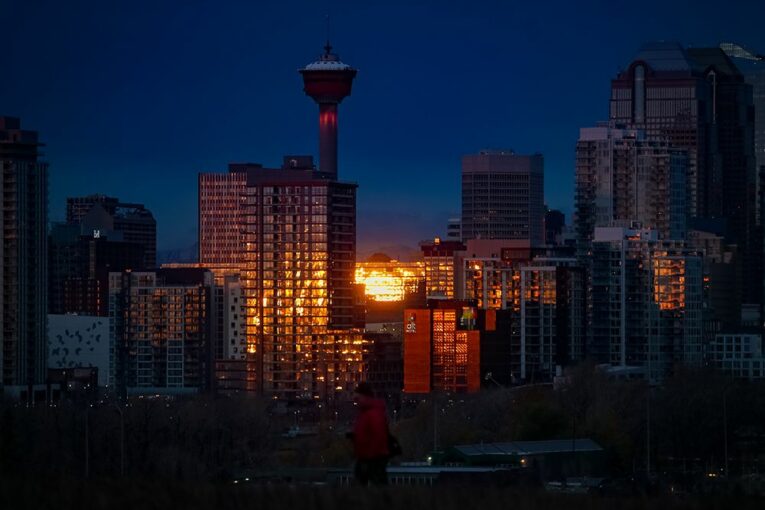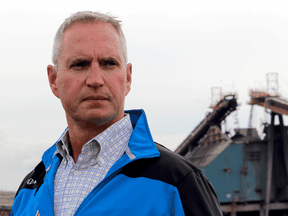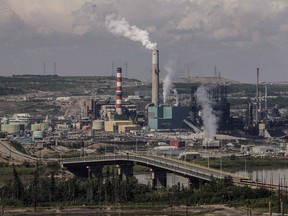
[ad_1]
It’s a tale of two Calgary-based energy companies moving in different directions, geographically speaking.
As oilsands giant Suncor Energy Inc. eyes the sale of some of its international properties, mid-sized producer Enerplus Corp. is seeking to unload all of its Canadian assets.
Calgary-based Enerplus, which has been growing its presence in the Bakken light oil basin in North Dakota for years, said Wednesday it would look to wrap up the successful divestment of all of its Canadian oil and gas properties by the middle of 2022.
“They are good assets and they have free cash flow, but it’s just becoming a smaller part of the business. Strategically, we want to continue to focus the business on the Bakken,” Enerplus chief financial officer Jodi Jenson Labrie said Thursday.
“We continue to maintain our head office in Calgary. A significant amount of people in the Calgary office support our U.S. operations and will continue to do so.”
The company has about 200 workers in Canada, including 150 in Calgary. It also has an office in Denver.
If its Canadian properties, which stretch from northwest Alberta to southern Saskatchewan, are all sold, it could potentially affect 30 to 40 jobs in the city, she said.
The company will keep its listing on the Toronto Stock Exchange.
“We see a lot of benefits to the Calgary location and office,” Jenson Labrie added. “When we’re looking for talent, we can actually access talent on either side of the border.”
But the decision does mark a further shift away from Canada.
During the fourth quarter, production at Enerplus averaged 128,000 barrels of oil equivalent (boe) per day. Output from Alberta and Saskatchewan made up just seven per cent of the total.
In November, the company indicated more than 80 per cent of its $500-million capital budget this year would be directed into North Dakota; its Canadian properties were in line for less than six per cent.
Founded in 1986 as the country’s first oil and gas royalty trust, Enerplus Resources Fund converted into a corporation in 2011.
It once had oilsands assets but repositioned its portfolio, acquiring properties in the Marcellus shale and Bakken formations in the United States.
Enerplus made its first U.S. foray in 2005, buying Dallas-based Lyco Energy for $509 million and acquiring operations in North Dakota and Montana.
The southern focus has sharpened in the past year.
Last January, it purchased Bruin E&P for US$465 million, adding about 24,000 boe per day from the Williston Basin in North Dakota. In April, it spent US$312 million to buy assets in the area from Hess Corp.
“I wouldn’t read into it anything about their view on Canada. They are keeping the head office here,” said analyst Patrick O’Rourke at ATB Capital Markets.
“They are trying to focus on where they’re finding their greatest success right now.”
While Enerplus is looking to grow in the U.S., oilsands giant Suncor is examining the fate of some of its international properties.

The company, which released fourth-quarter results on Wednesday, produced 743,000 boe per day during the final three months of last year, a drop from 769,000 in the prior year quarter.
The decline was due to lower output in its exploration and production assets and the effect of selling its Golden Eagle Area Development in the U.K. North Sea.
The company pumped out almost 30,000 boe per day from its international assets in the fourth quarter, down from 41,000 a year earlier.
Suncor CEO Mark Little said the company is considering selling a portion of the U.K. North Sea Rosebank oilfield, a proposed project 130 kilometres off the Shetland Islands that is moving closer to sanctioning.
Last month, Bloomberg News reported Suncor is marketing exploration and production assets in Norway.
Asked during an analyst call Thursday about the longevity of the company’s international portfolio, Little noted Suncor’s oilsands operations are concentrated in northern Alberta.
International properties provide “a great diversification” to the company and exposure to global oil pricing.
“As time goes on, we continue to refine and optimize our base business,” he said.
“So w e’re testing the waters on a few of these assets.”
It’s not a surprise to see Suncor examining its portfolio.

International properties have been a small part of the broader business, with Suncor able to realize value by entering early stage ventures and then selling them off at a later point, said analyst Matt Murphy with investment bank Tudor, Pickering Holt & Co.
“It is certainly not what we, and investors, would consider a core part of the story,” Murphy said. “The core part of the story for some time now is oilsands and refining.”
With higher oil prices and producers focused on returning money to shareholders, this could be a busy period for asset sales in the oilpatch.
Imperial Oil and ExxonMobil Canada announced last month they are marketing their joint ownership in XTO Energy Canada, which has assets in the Montney and Duvernay areas of Alberta.
“We felt it was appropriate to test the market,” Imperial CEO Brad Corson said on an analyst call this week.
“There is a lot of interest.”
In December, Cenovus Energy sold off its Tucker thermal oilsands development to Strathcona Resources for $800 million.
Expect more sales to come.
“It’s going to be robust,” said O’Rourke.
“Companies have the ability to do a lot more than they have over the past few years. That creates a situation that’s favourable to the horse-trading of assets.”
Chris Varcoe is a Calgary Herald columnist.
[ad_2]
You can read more of the news on source
